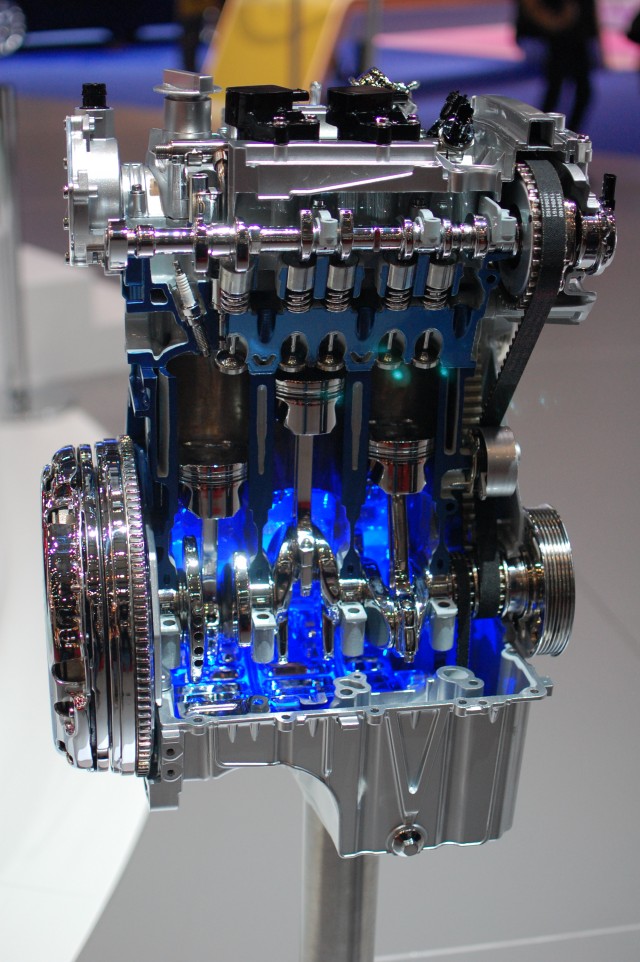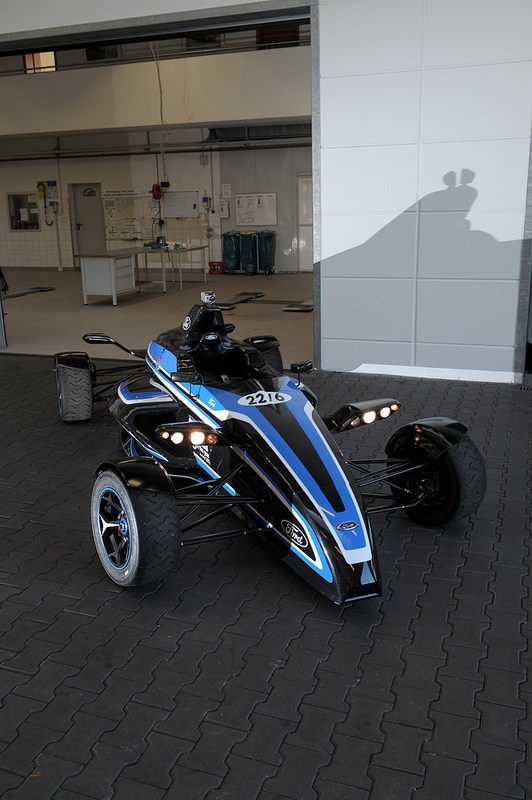Ford’s 3-cylinder 1.0 liter Ecoboost engine was designed to replace 1.6 liter naturally aspirated engines while providing 20% better fuel economy, 15% less emissions and more performance. It’s effect on the European small car market won the 1.0 Ecoboost the 2012 Engine of the Year award. To celebrate, Ford Europe outfitted a Formula Ford race car with the 1.0 liter Ecoboost engine and the bare minimum safety equipment to make it street legal. The turbo was upgraded to the bigger unit from the 1.6 liter 4-cylinder engine which pumped the output up to 200 hp. Race driver Nick Tandy was able to set a 7:22 around the Nurburgring which ties the time of the Dodge Viper ACR and is faster than a Nissan GT-R while delivering 56 mpg.
Ford Europe gave Chris Harris the opportunity to drive the Formula Ford Ecoboost on the streets and then take it for his own lap around the Nurburgring. The part that I found the most interesting is simply watching Harris’s reaction. He has recently had the chance to drive some of the most cutting edge green technology performance cars and has been uneasy with them. In the Mercedes-Benz SLS AMG Electric Drive Harris was wowed by the fact that the controls strategy for the four drive motors could completely change how the chassis reacted but wasn’t completely sold on the fact that the car was a pure EV. When Chris drove the Porsche 918 Spyder, he was very impressed with the car’s performance and engineering, but the thought of applying the same lightweighting techniques to a gas powered car would yield better performance ultimately bugged him. Here Chris just enjoys the car and hardly mentions the green aspect of the Ecoboost engine. It seems as though being able to hear the boost of the turbo and having the characteristic of a tuned engine, albeit a small one, doesn’t rob the driver of the performance experience despite getting good gas mileage.
Source: DRIVE on YouTube


